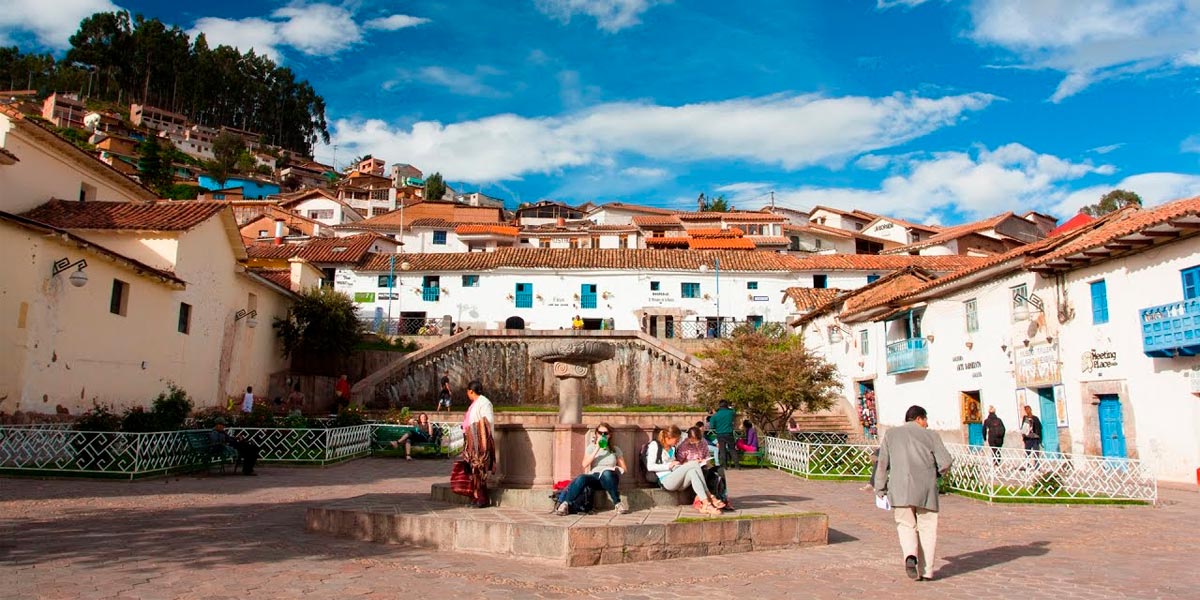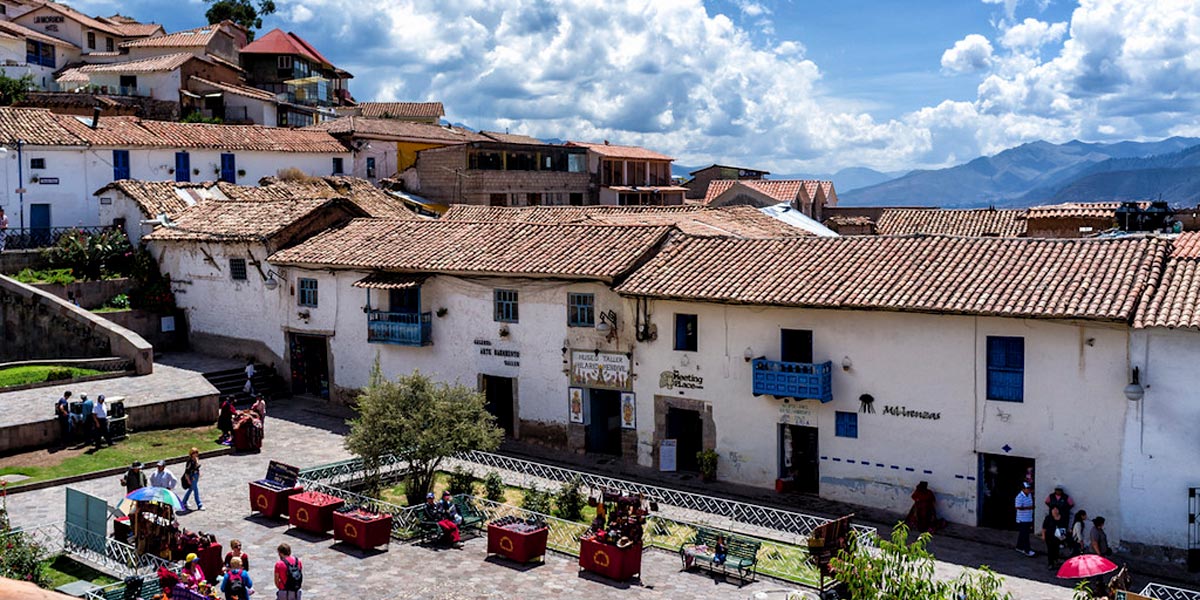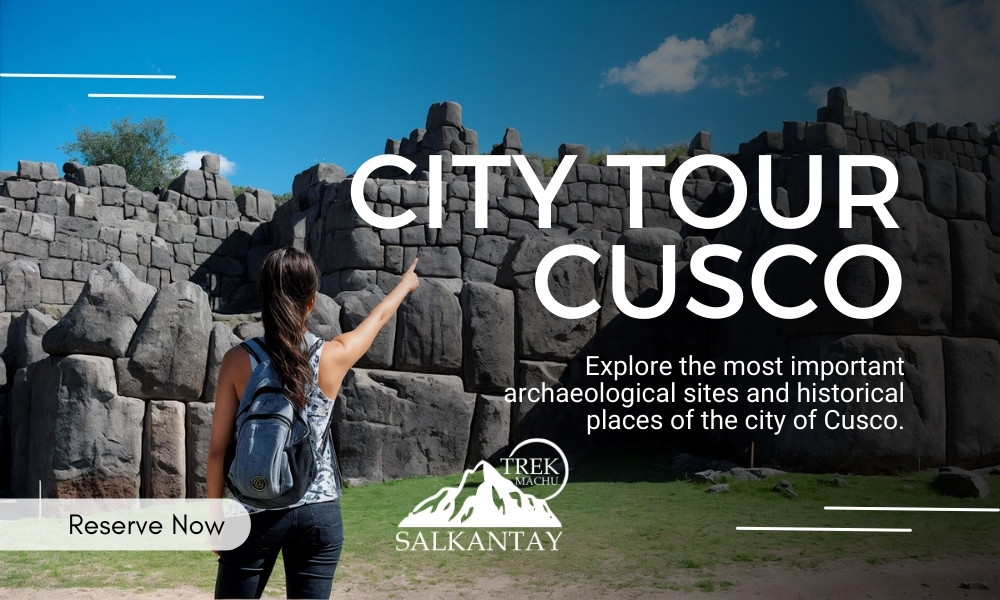
San Blas, known as the traditional "artisans neighborhood", is one of the most striking places in the Historic Center of Cusco. Its streets, colonial houses with wooden balconies, and workshops open to the public characterize it. Just four blocks from the Plaza de Armas, this neighborhood is easy to access for visitors who want to get to know a more authentic Cusco, far from the tourist noise and close to the daily life of its residents. There, you can find everything from art galleries and ceramic workshops to weaving and jewelry stores.
In the time of the Inca Empire, this sector was known as T’oqokachi (which means "Hole or Salt Cave"), and was part of an important residential area. With the arrival of the Spanish, the neighborhood acquired a new look: churches and large houses were built on top of old Inca walls, uniquely fusing the Andean style with European architecture.
One of the most representative examples of this cultural mix is the Church of San Blas, famous for its pulpit carved in cedar wood, considered one of the masterpieces of Cusquenian Baroque art.
History of the San Blas neighborhood
The history of San Blas dates back to the Inca Empire, when this neighborhood was known as T’oqokachi, which in Quechua means "Salt Cave". At that time, it was a place of residence for influential families dedicated to architecture and crafts. Its location at a high altitude made it a privileged site, as it had spring water and offered an impressive view of the entire Cusco valley.
Furthermore, it is believed that the remains of Inca Pachacutec, the great Inca who ordered the construction of Machu Picchu, rested in T’oqokachi. This reinforces the idea that the neighborhood was a space of great relevance for the Inca elite, not only for its beauty but also for its symbolic and spiritual importance.
With the arrival of the Spanish, the neighborhood changed radically: it was renamed San Blas, in honor of a 3rd century bishop known for curing people and animals. The conquerors destroyed the Inca temples in the area and built churches and colonial houses on their foundations. This mix of Andean and European styles gave rise to the unique architecture that characterizes San Blas today.
Fact: With the independence of Peru and the start of the Republic, San Blas began to consolidate itself as an artistic and cultural center within Cusco. Great masters like Mendívil, Olave, and Mérida settled here, leaving a legacy that can still be appreciated in galleries and workshops where visitors can admire and purchase authentic works of art.

What to visit in the San Blas neighborhood?
The San Blas neighborhood has very interesting places to visit day and night, as its narrow and beautiful streets full of art and culture will make you have the best of experiences in the magical city of Cusco. Next, we present the places preferred by both locals and visitors.
On your tour of San Blas you can visit the workshops and shops of the best artists in Cusco. You can also visit other places such as: the Stone of the 12 angles, the main temple, the San Blas market and more.
Hatun Rumiyoc street (Stone of 12 angles)
Hatun Rumiyoc is a Quechua word that means 'big stone street'. It connects the Plaza de Armas of Cusco with the famous Stone of the 12 angles. This popular polished rock in twelve corners is part of a wall of the Inca palace of Sinchi Roca (now the Archbishop's Palace). In this street shows some craft shops.
Merida house
The family's Casa Mérida is located on Calle Carmen Alto. Edilberto Mérida's work moved away from traditional imagery with a European flair. His work has disproportionate features with large hands and huge feet. Most of them are costumbristas where the indigenous people with faces of pain stand out. One of his most recognized works is the 'Indigenous Jesus Christ'.
Olave Crafts
The artisan from Cusco Antonio Olave is famous for being the creator of the 'Manuelito boy'. The tenderness and delicacy that his works give off have earned him several awards such as: 'Great Master of Peruvian Crafts' and 'Living Human Treasure of the Nation'. In his work you can see mirrored palates, bird feather teeth and natural hair on the heads of these 'Manuelitos' children.
The San Blas market
The small but famous market of San Blas is characterized by offering fruits, vegetables and food from Cusco to tourists who pass through there. Many of them choose to have lunch or breakfast in this market. You can also buy various handicrafts such as alpaca clothing, souvenirs and more.
Slope of San Blas
More than a point to visit, it is a kind of mandatory preview if you come from the Plaza de Armas. The San Blas slope begins on “Choque Chaqa” street and you will be able to get a first impression of what the other little streets that connect with the square are like. On the slope of San Blas we will find:
> Galleries and workshops: you have at your disposal the galleries and workshops of the most renowned Cusco artists, as well as taking a look at these wonderful works and buying one that catches your eye.
> San Blas square: at the end of the San Blas slope we will find the San Blas square, that small meeting point where we can rest and relax after so much hustle and bustle. From here we can easily access two of the most visited attractions in the area: the San Blas Temple and the Hilario Mendivil y Familia Gallery.
During the day the view is splendid, but at night the city lights up and it is a spectacle that you definitely do not want to miss. The local businesses adopt the night climate and become very attractive places for those interested, especially the bars. There are also nocturnal tours by local singer-songwriters, who, through their music, tell us myths, legends and a bit of culture.
San Blas Temple
The famous Temple of San Blas, also known as the Church of San Blas, was built in adobe in 1563 on an Inca huaca in which the god Illapa was venerated. It was rebuilt in stone in 1650 after an earthquake. Today it is considered one of the jewels of colonial architecture.
Gallery of Hilario Mendivil and Family
The Hilario Mendivil and Family Gallery is one of the most important museums in the city of Cusco. It is the place where the Mendívil family, and especially Hilario Mendivil, present their wonderful art to the public. Hilario Mendivil was one of the greatest Peruvian artisans of the 20th century, being recognized for his art and style of clothing, such as saints, virgins and arquebusiers with a serene face and long neck.
Restaurants and bars
How could it be otherwise, a place as busy as the Barrio de San Blas has a wide variety of restaurants and bars for all tastes. We mention a couple of them:
> Limbus Resto Bar: As the name implies, this is a restobar. It is a good place to hang out and marvel at the view, as it has glass on all sides and, in addition, it has a balcony where you can relax while you observe the landscape that the town offers you while you sunbathe.
> The Meeting Place: it is located in the San Blas square and is a place that will make you feel at home. The Meeting Place is a cafe where you can enjoy an exquisite breakfast, lunch or a cup of coffee.
San Blas viewpoint
To end our daytime tour, and in order to contemplate the beautiful sunset that falls on the Historic Center of Cusco, the San Blas Viewpoint will be our next stop. It is found going up to Tandapata Street, from the San Blas Square, and finally through Pasñapaskana Street. In addition, it has been remodeled and conditioned to offer the best view and comfort to visitors.
Currently, the friendly residents of this neighborhood proudly show visitors all the artistic expressions in goldsmithing, ceramics, and wood or stone carving that they created in San Blas.
As we mentioned before, San Blas, at night, turns into a colorful party. The bars welcome travelers who come to see the wonderful city of Cusco with joy and good music. Did you dare to know a little more about it? So don't wait any longer and get to know this spectacular neighborhood in the imperial city.

Is the San Blas neighborhood in Cusco dangerous?
The San Blas neighborhood has police security 24 hours a day. Tourists can walk its streets either during the day or at night with complete peace of mind.
What to wear?
- Photographic camera.
- Cash (preferably).
- Map of Cusco (or use Google Maps).
- Backpack with water, snacks, fruits, etc.
Is there a tour to the San Blas neighborhood?
Tourism agencies do not offer a tour package for the San Blas neighborhood.
However, if the tourist wants to know the attractions of this place in the company of a professional tour guide, they can request their service through a tourism agency (either online or in the city of Cusco itself).
Interesting facts about San Blas in Cusco
- During the time of the Incas, the area corresponding to San Blas was called 'T'oqokachi', a Quechua word that means 'Salt cave'. After the Spanish invasion, the place was renamed San Blas in honor of the Bishop of Sebaste who lived in the 3rd century.
- According to some chroniclers, the mummy of the Inca Pachacutec (emperor who ordered the construction of Machu Picchu) was in the temple of Tococache (current church of San Blas) until the Spanish took and destroyed it.
- During the Republic of Peru, artisans from Cusco settled in San Blas. Since then, the place became famous as: the neighborhood of the bohemians.
- Currently, in the San Blas neighborhood, many "backpackers" gather to offer their crafts, music and artistic talent. Despite its fame, its streets are rarely used by tourists. Its small square is the perfect place to enjoy a moment of silence.

Other experiences near Cusco
Beyond the majesty of Machu Picchu, the surroundings of Cusco offer a variety of experiences that allow you to get to know the culture, history, and landscapes of Andean Peru up close. From traditional towns to little-explored natural wonders, there is a lot to discover just a few kilometers from the imperial city. If you are looking for new adventures outside the usual, here we present the places you can't miss:
Inca Trail, Machu Picchu and more
